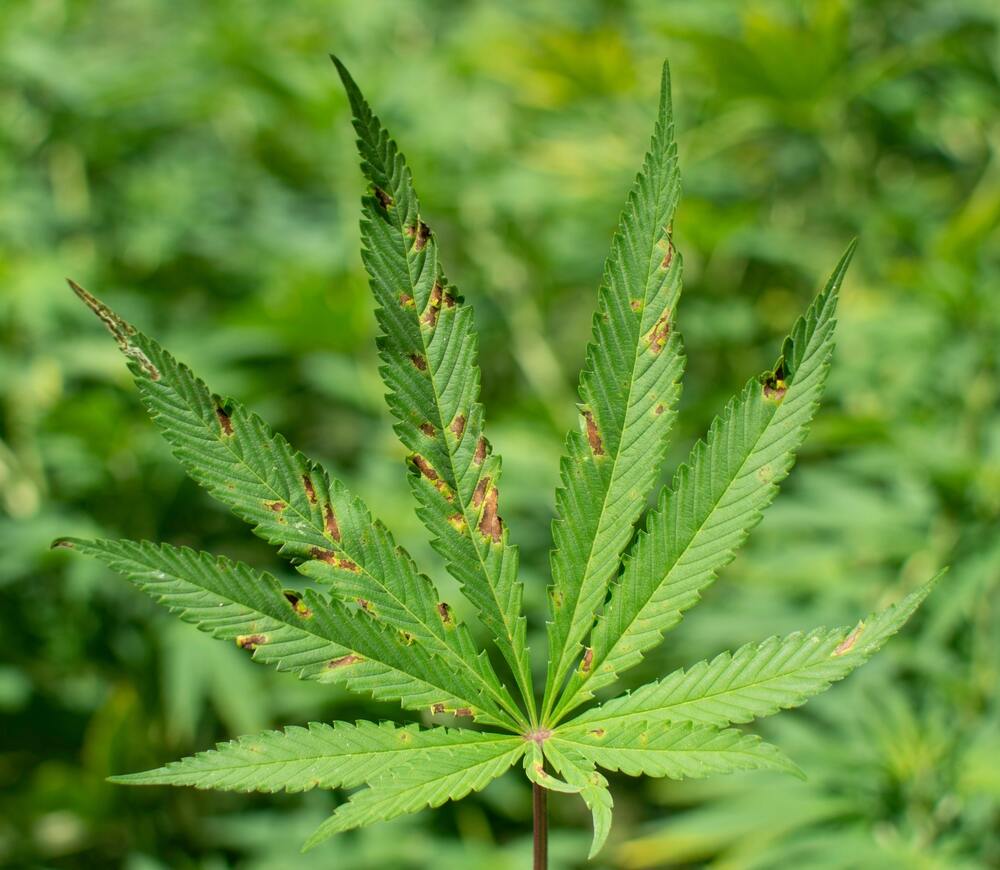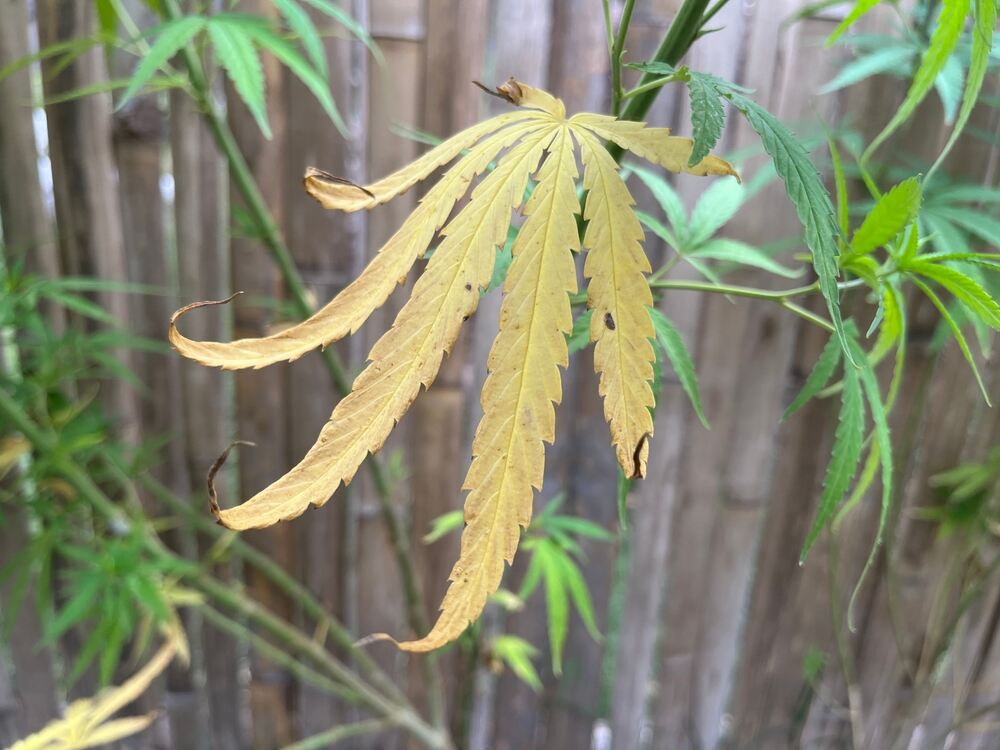The Best Fluffy Pancakes recipe you will fall in love with. Full of tips and tricks to help you make the best pancakes.

Identify and Fix Calcium Deficiency in Cannabis
Growing marijuana can be super rewarding, but it’s not without its hiccups. One of the more common bumps along the way is calcium deficiency, which can slow down your plants and mess with your yield. Don’t stress though—it’s something you can fix if you catch it early. Let’s break down how to spot calcium deficiency and, more importantly, how to fix it and prevent it from happening again.
What is Calcium Deficiency in Cannabis?

Calcium deficiency is exactly what it sounds like—your weed plants aren’t getting enough of this essential nutrient, and that can lead to some gnarly problems. Calcium is key for helping your plants grow strong roots and solid cell structures. It’s like the building blocks that hold everything together. Without enough calcium, plants become weak, and their growth is stunted, leaving them vulnerable to other issues.
Importance of calcium for cannabis growth
Calcium plays a major role in developing the root system of your plant. It’s absorbed through the roots and travels up to the leaves where it stays (unlike some other nutrients that move around as needed). Calcium is also important because it helps your plant absorb other nutrients like magnesium. If calcium’s off, everything else goes haywire.
The role of calcium in root and cellular structure development
At the root level, calcium helps cannabis plants absorb other nutrients like magnesium and potassium. Think of it like a gatekeeper—without enough calcium, those other nutrients don’t get in properly. Calcium also strengthens the cell walls in your plants, helping them stand tall and resist disease. Basically, without calcium, your plants are like a house with weak foundations.
Causes of Calcium Deficiency in Cannabis
Now, the big question: Why are your plants lacking calcium? Usually, it’s down to a few key things, so let’s dive into the most common causes.
Incorrect pH levels in the growing medium (soil, hydroponics, coco coir)
One of the biggest reasons calcium can’t get into your marijuana plants is that the pH level in the soil (or whatever medium you’re using) is off. Calcium absorbs best in slightly acidic conditions. If your pH is too low or too high, calcium gets locked out even if it’s there in the soil. This is why I always recommend checking pH levels regularly—keeping that sweet spot between 6.2 and 7.0 for soil and 5.5 to 6.5 for hydro and coco is key.
Use of reverse osmosis (RO) or filtered water lacking minerals
If you’re using RO or super-filtered water, you might actually be stripping away essential minerals like calcium. RO water can be great for certain setups, but you’ve gotta remember to supplement calcium and other minerals if you go that route. Otherwise, your plants are missing out big time.
Nutrient lockout due to excess potassium or magnesium
Ever heard of nutrient lockout? Basically, if there’s too much of something else in the soil—like potassium or magnesium—it can prevent your plants from absorbing calcium. These nutrients compete for absorption, and if the balance is off, calcium ends up losing.
Poor soil quality and environmental stress
Crappy soil quality, especially soils that are too acidic, sandy, or lacking organic matter, can lead to calcium issues. Add environmental factors like high humidity, which reduces transpiration, and you’ve got a recipe for calcium deficiency. Stress from pests or root damage can also mess with nutrient uptake.
Strain-specific nutrient requirements
Not all strains are created equal. Some cannabis plants just have higher calcium demands. So, if you notice one strain is struggling while others are thriving, it could be a strain-specific issue. It’s worth doing a bit of research on your particular strain to see if it’s more calcium-hungry than the others.
Symptoms of Calcium Deficiency in Cannabis Plants
Spotting calcium deficiency early is essential to stopping the damage before it gets out of control. Here’s what to look out for.
Early signs (yellow or brown spots on new leaves, weak stems)
The first signs of calcium deficiency show up on the new growth. You’ll likely see brown or yellow spots on the leaves, especially the ones at the top. The stems may also look weak or flimsy, and growth in general slows down. If you’ve got weak stems, that’s a red flag.
Slowed growth and weak branches
If your plant looks like it’s hitting the brakes on growth, calcium could be the issue. The branches can become weak and brittle, and sometimes they even hollow out. This can seriously affect the structure of your plant, making it more prone to breaking.
Hollow stems and susceptibility to heat stress
Plants lacking calcium can’t deal with heat stress as well as they should. The stems might feel hollow, and they’ll snap more easily. This will really mess with your final yield since the plant won’t have the strength to support healthy bud growth.
Impact on flower development and overall yield
When calcium is low, your buds won’t develop properly. You might see distorted flowers, smaller buds, or even gaps in your flower structure. In the worst cases, your yield is reduced, which is just heartbreaking after all that hard work.
How to Fix Calcium Deficiency in Cannabis
Alright, so you’ve spotted a calcium deficiency. Now what? Time to get your hands dirty and fix it.
Adjusting pH levels for optimal calcium absorption (soil, hydroponics)
First things first—check the pH of your soil or medium. Calcium can’t do its job if the pH is out of whack. For soil, aim for a pH between 6.2 and 7.0, and for hydro or coco, stick with 5.5 to 6.5. Get yourself a good pH meter if you don’t already have one and keep an eye on those levels.
Flushing the growing medium to remove nutrient build-up
If you think there’s a nutrient lockout, flush your system with clean, pH-balanced water. This helps wash away any salt build-up that might be blocking calcium absorption. Just don’t overdo it—you don’t want to drown your plants!
Using calcium-rich supplements (Cal-Mag, dolomite lime)
Once your pH is in check, you’ll want to give your plants a calcium boost. Cal-Mag is a great supplement that works in almost any setup—soil, hydro, or coco. For soil growers, you can also add dolomite lime, which is organic and slowly releases calcium over time. You can even use crushed eggshells if you’re into DIY solutions.
Foliar sprays for immediate results
In serious cases, foliar sprays can be a quick fix. Just mix Cal-Mag or another calcium supplement with water, and spray it directly onto the leaves (but avoid the buds!). This gives the plant an immediate hit of calcium.
Switching from RO water to tap water
If you’ve been using RO water, try switching to tap water for a bit—just make sure the pH is balanced. Tap water often contains trace minerals like calcium that can help bring your plants back to life.
Best Practices to Prevent Calcium Deficiency
Prevention is always better than a cure, right? Here are some ways to keep calcium deficiency from rearing its ugly head in the first place.
Regular pH monitoring and adjustments
I can’t stress this enough—regular pH checks are essential. Keep the pH in that sweet spot, and you’ll prevent a lot of problems before they even start.
Using high-quality nutrients and water sources
Don’t skimp on the nutrients. High-quality cannabis-specific nutrients will usually include everything your plants need, including calcium. Also, be mindful of your water—whether it’s tap or RO, always make sure it’s got the right balance.
Maintaining proper watering practices
Over-watering and under-watering can both mess with calcium uptake. Keep your plants on a consistent watering schedule, and don’t drown them!
Checking plants daily for early signs of deficiencies
A quick daily check can save you a ton of hassle down the line. Look for early signs like spots on the leaves or weak stems, and nip those issues in the bud (pun intended).
Balancing nutrients to avoid lockout
Too much of a good thing can be bad. Make sure you’re not overloading your plants with other nutrients like potassium or magnesium, as this can block calcium absorption.
FAQs
How can I tell if my cannabis plant has a calcium deficiency?
Look for yellow or brown spots on new leaves, slowed growth, and weak stems. Plants may also develop hollow stems or show stunted flower development.
What is the best pH range for calcium absorption?
For soil, aim for a pH of 6.2–7.0. In hydro or coco, keep the pH between 5.5 and 6.5 to ensure calcium is absorbed properly.
Can I use homemade solutions like eggshells to add calcium?
Yes, crushed eggshells can provide calcium over time, but they work best in organic soil setups. For faster results, use a commercial calcium supplement.
Is calcium deficiency more common in hydroponic systems?
Yes, hydroponic setups are more prone to calcium deficiency due to the lack of natural minerals in the water. Regular supplementation is key.
How long does it take for a plant to recover from calcium deficiency?
You should see improvements in new growth within a week of fixing the issue. Old damaged leaves won’t recover, so focus on healthy new growth.
Dealing with a calcium deficiency can seem daunting, but once you understand the causes and symptoms, it’s not too hard to fix. Stay on top of your pH levels, use quality nutrients, and don’t forget to give your plants a little extra love when they start thriving again! By maintaining the right nutrient balance and keeping a close eye on your weed’s health, you’ll ensure your plants grow strong and deliver a great harvest.




